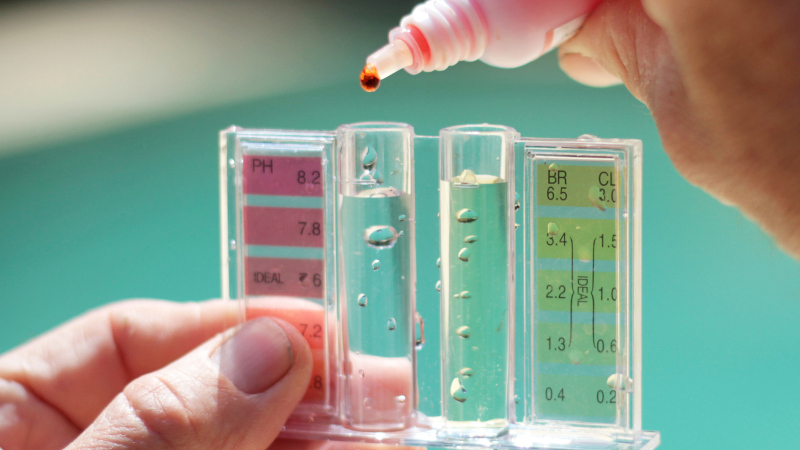The chemical makeup of your pool water dictates its health, and pool testing is your diagnostic tool. It provides the clarity needed to move beyond guesswork, ensuring your pool maintenance efforts are both effective and efficient. In this blog, we’ll explore a few key chemicals whose levels should be monitored regularly through pool testing:

- Chlorine Levels. Chlorine is the primary sanitizer in most pools. It eliminates bacteria and other harmful organisms, but too much or too little can lead to skin irritation, cloudy water, or algae growth.
- Calcium Hardness. Calcium hardness refers to the amount of dissolved calcium in your pool water. Water that is too soft (low in calcium) can become corrosive, potentially damaging plaster, vinyl liners, and metal components. Conversely, water that is too hard (high in calcium) can lead to scale formation on surfaces and inside plumbing, clouding the water.
- Phosphates. Phosphates are food for algae. While not directly harmful to swimmers, high phosphate levels can promote persistent algae blooms, making your pool unsightly and requiring more chlorine to manage. With regular pool testing, you can ensure phosphate levels are within acceptable limits, thus helping preempt these frustrating green invasions.
- Cyanuric Acid (CYA). Often referred to as a stabilizer or conditioner, cyanuric acid protects chlorine from being rapidly degraded by the sun’s ultraviolet rays. Without adequate CYA, your chlorine will dissipate quickly, making sanitization less effective and more costly. However, excessively high CYA levels can also reduce chlorine’s effectiveness, so balance is key.
If you’d like to learn more about pool testing and its importance, get in touch with our team at All Season Pools today.
